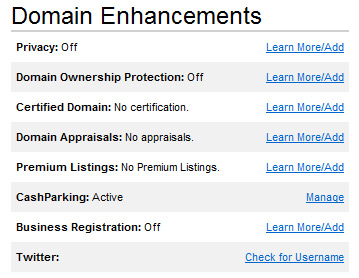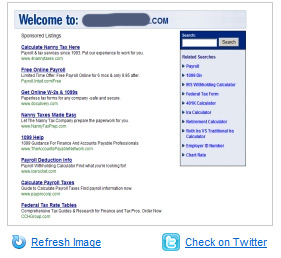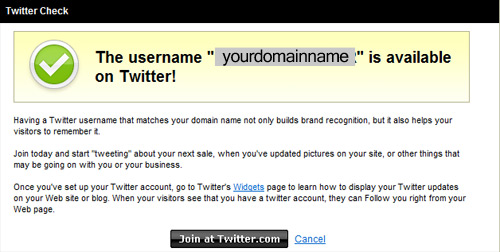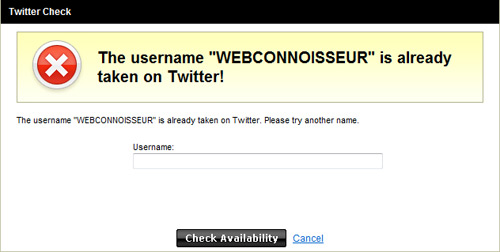 When you have major game-changing news or work for an incredibly popular company, having relationships with the press is easy. For the rest of us, there’s a right way and a wrong way to establish a relationship with the press.
When you have major game-changing news or work for an incredibly popular company, having relationships with the press is easy. For the rest of us, there’s a right way and a wrong way to establish a relationship with the press.
Before I jump into techniques, I want to talk about tools. The good news is that web technology has opened up doors for any company, no matter how small, to establish a relationship with the press. Not only can you find the right journalist, but you can have a discussion and at the time when the journalist is most open to your expertise. In particular, there are two places you should certainly utilize to take advantage of press opportunities.
Using Twitter & LinkedIn for Press
Twitter is great for establishing a relationship with the press. Most journalists display their Twitter account on their publication. For example, the NY Times has a full page dedicated to their staff Twitter accounts. By performing simple and Advanced Twitter Searches, you can identify members of the press who are trying to solve a problem or want information for an upcoming column.
Below is a search I did on Twitter a while back where I used the terms “is about column next”. Take a look how powerful a search like this can be:
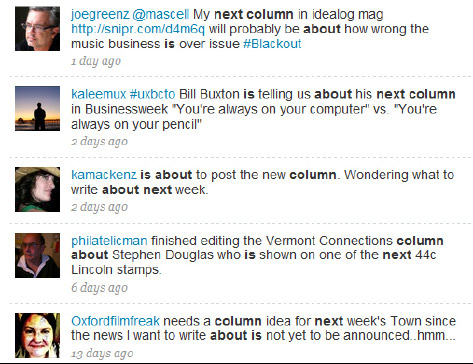
LinkedIn is a searchable Rolodex that not only helps you find journalists to reach out to, but shows you one’s in your network, meaning journalists that a friend of yours can introduce you to. Take a look at the advanced search I did for job title=”editor”:

Establishing a Relationship
 Besides performing smart searches, how do you actually establish a relationship with the press? It is fairly simple. Take a look at the pictures on the right.
Besides performing smart searches, how do you actually establish a relationship with the press? It is fairly simple. Take a look at the pictures on the right.
One shows someone shouting. This is the default method that most people try to employ. The shout method. They are so excited about their own product, they forget that by default, most people aren’t. You can’t just beat the press over the head with your product. Hence, why you need to establish a relationship.
Instead, show the journalist the path that leads back to you. For example, if you sell organic beer, instead of shouting “we are one of only 3 companies selling organic beer in the U.S.,” establish a relationship by reaching out to them about their latest organic coffee story. You might mention:
“Thank you for the deep coverage of the organic coffee industry. I work in the organic beer industry and find the challenges are much the same. The one difference is that organic coffee beans are usually grown in 3rd world countries, whereas organic grain is usually obtained locally. The battle for organic beer brewers isn’t about preserving rain-forests or dealing with foreign governments, its about convincing local farmers to produce grain that can be certified organic.”
Hopefully you may have inspired a new article about organic beer brewing. Even if you didn’t, you might find yourself as a source on their upcoming article on local farmers.
Another great way to establish a relationship is to meet them in person. If you know they will be at an event or conference, try to attend and join in on a conversation with them (avoid talking about your company). Then, later on, when you message them, you can remind them where you first met.
Benefits of Establishing a Relationship With the Press
Besides an increased chance of getting coverage, investing in a relationship with the press has these benefits:
- Repeat coverage – you’ll have a far greater likelyhood of obtaining press more then once
- Direct contact to fix links in the article or add in missing links (very important for SEO)
- Relationship extends beyond current publication – journalists may change jobs or companies, but you’ll still be connected.

 Background on the t.co Domain
Background on the t.co Domain When you have major game-changing news or work for an incredibly popular company, having relationships with the press is easy. For the rest of us, there’s a right way and a wrong way to establish a relationship with the press.
When you have major game-changing news or work for an incredibly popular company, having relationships with the press is easy. For the rest of us, there’s a right way and a wrong way to establish a relationship with the press.

 Besides performing smart searches, how do you actually establish a relationship with the press? It is fairly simple. Take a look at the pictures on the right.
Besides performing smart searches, how do you actually establish a relationship with the press? It is fairly simple. Take a look at the pictures on the right. Every time I’m in my account tweaking my domains, I can’t help but notice the twitter promotion overload. I can’t help but wonder why GoDaddy would take such a keen interest in helping to fuel more twitter accounts. From a service perspective, it is pretty lame because it is already incredibly easy to check name availability and sign up for twitter. I could think of a hundred other features GoDaddy should build and promote instead. If it were a two-way arrangement, where Twitter promotes domain registration for Twitter user names, then I could see the benefit.
Every time I’m in my account tweaking my domains, I can’t help but notice the twitter promotion overload. I can’t help but wonder why GoDaddy would take such a keen interest in helping to fuel more twitter accounts. From a service perspective, it is pretty lame because it is already incredibly easy to check name availability and sign up for twitter. I could think of a hundred other features GoDaddy should build and promote instead. If it were a two-way arrangement, where Twitter promotes domain registration for Twitter user names, then I could see the benefit.